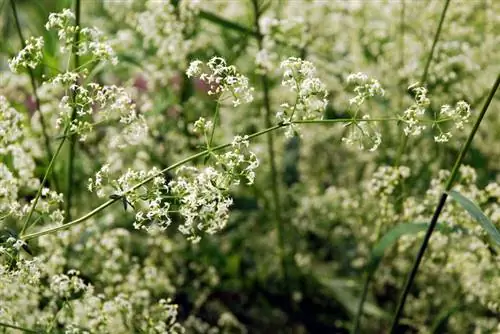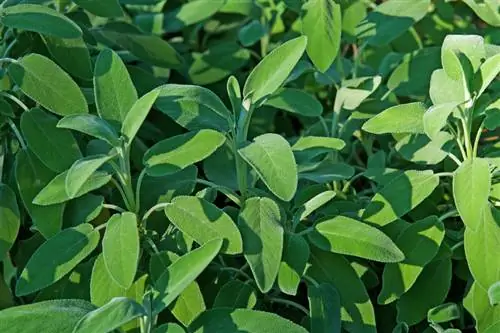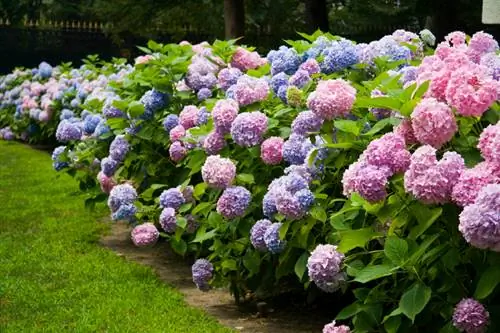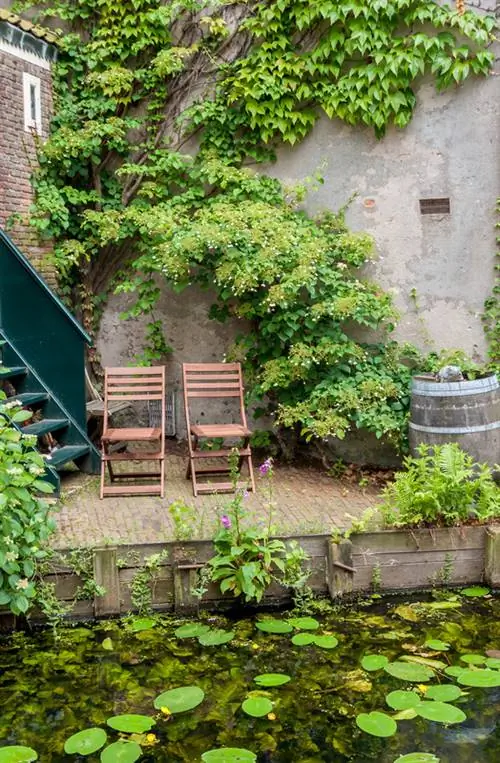- Author admin [email protected].
- Public 2023-12-16 16:46.
- Last modified 2025-01-23 11:20.
Gypsophila, in Latin Gypsophila paniculata, can be planted very well where other flowers rarely bloom, namely on dry, poor and nutrient-poor soil. It is one of the few plants that doesn't particularly like compost.
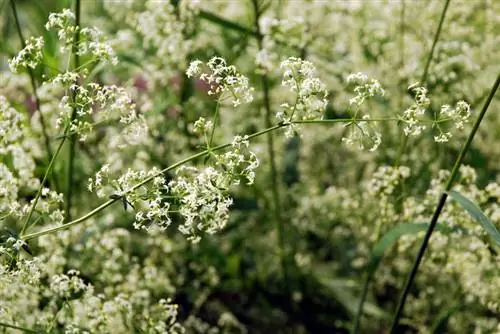
How do I plant gypsophila correctly?
Gypsophila (Gypsophila paniculata) prefers dry, nutrient-poor and calcareous soil as well as a sunny location. The best time to plant is spring. Waterlogging should be avoided and a drainage layer should be created if necessary. Avoid adding compost and water sparingly.
The best location and the right soil
Gypsophila likes it dry and warm. Therefore, the location should be sunny if possible; it can also lie in the blazing sun. Only young plants cannot tolerate too much sun. Tall growing varieties should be protected from wind. A support is also recommended here so that the plants do not lie on the ground in wind or rain.
Calcareous and stony, this is good soil for gypsophila. If it receives too many nutrients, it will not bloom as desired. If the soil is too heavy, you can loosen it with sand or gravel. Low-growing varieties are ideal for planting on dry stone walls or rock gardens. They are also often planted in containers and pots.
The best planting time
In principle, you can plant baby's breath all year round as long as the ground is free of frost. However, the ideal planting time for new cuttings and mature gypsophila is spring. You can also divide existing plants at this time. It is best to add a drainage layer of potsherds or coarse gravel to the planting hole, as baby's breath does not tolerate waterlogging.
Sowing baby's breath
Sow baby's breath in pots in March or April and cover the seeds with just a little soil that you only slightly moisten. Cover the pots with a glass plate or transparent film and place the pots in a warm but not too sunny place. During germination, the seeds should only be slightly moistened and ventilated regularly.
The best planting tips:
- dry and warm
- Avoid waterlogging at all costs
- possibly create a drainage layer
- nutrient-poor soil
- absolutely avoid compost
- don't water at all or only water a little
Tips & Tricks
In order for your gypsophila to bloom profusely, it needs nutrient-poor and dry soil. Do not water it too much and avoid adding fertilizer or compost.

